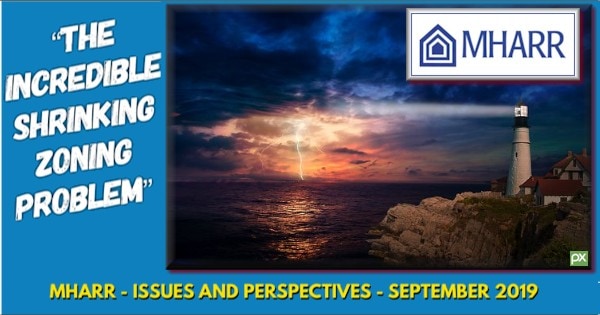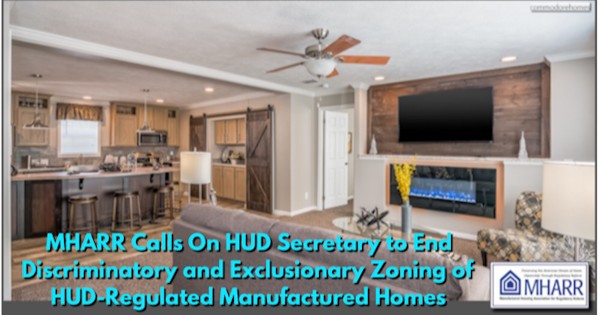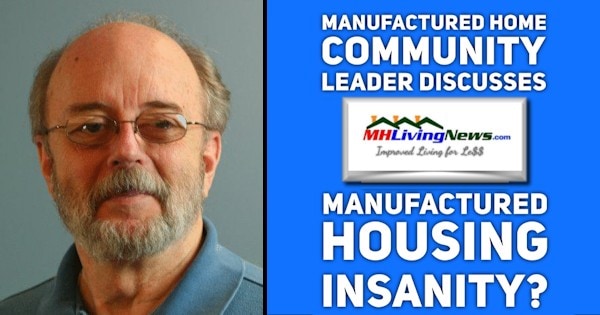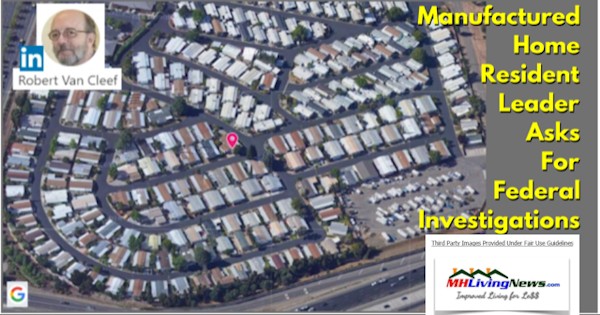
Among several things that make manufactured housing industry reports elsewhere in the industry’s trades or several associations is their questionable failure to do what we periodically do in reports like this one. Specifically, when reports from Realtor and the National Association of Home Builders (NAHB) – per statements on, by, and to CNBC – say that a ‘perfect storm’ for conventional builders has hit the affordable housing market.
Rephrased, a shrewd reading and viewing of what follows should be reasons why manufactured housing ought to be soaring. More on that after our review of their reporting and videos.
Per Diana Olick at left-of-center CNBC:
Lower mortgage rates are causing an epic housing shortage
- National housing inventory fell 2.5% annually in September, a sharper decline than August’s 1.8% decrease, according to realtor.com
- An unseasonably strong surge in demand at the end of summer and into this fall now has the supply of homes priced below $200,000 down 10% compared with a year ago.
- The supply of homes priced between $200,000 and $750,000, which make up 60% of the market, flat-lined in September, after 18 months of strong inventory growth. Supply is now expected to decline in the months ahead.
Olick said that: “Anyone out hunting for an affordable home today knows that the pickings are slim – and they are about to get slimmer.”
Some pull quotes with the highlighting added by MHProNews.
- Housing inventory hit a record low about two years ago, but a lull in home sales over the past year helped build back much-needed supply, especially in the mid-priced range. Then a sharp drop in rates this summer brought demand back and has depleted that supply dramatically.
- National housing inventory fell 2.5% annually in September, a sharper decline than August’s 1.8% decrease, according to realtor.com
- Supply has always been leanest on the low end, as investors have been very active in that price range since the foreclosure crisis.
- Roughly five million mostly entry-level homes have been turned into single-family rentals, and strong demand for those rentals means investors are unlikely to put the homes up for sale anytime soon.
- In addition, an unseasonably strong surge in demand at the end of summer and into this fall now has the supply of homes priced below $200,000 down 10% compared with a year ago.
- The demand is being fueled by lower mortgage rates. The average rate on the 30-year fixed surged over 5% last November and stayed above 4.5% through March, according to Mortgage News Daily. That made for a lackluster spring housing market, traditionally the busiest time for buying.
- Rates then began falling in May and particularly sharply in July and August. By the start of September the average rate was around 3.5%, and sales of both new and existing homes were surging back. Clearly there was substantial pent-up demand from the spring.
- Demand also surged in the move-up market, causing supplies there to fall as well. The supply of homes priced between $200,000 and $750,000, which make up 60% of the market, flat-lined in September, after 18 months of strong inventory growth. Supply is now expected to decline in the months ahead.
Dwindling Options
“If, or better yet, when inventory in this segment begins to take a downturn, the vast majority of homebuyers are going to feel its effects as their options rapidly dwindle,” according to George Ratiu, Senior Economist for Realtor.com. “September inventory trends, especially in the mid-market, may be the canary in the coal mine that we could be headed for even lower levels of inventory in early 2020.”
That statement, and others noted or highlighted ought to be music to the ears of manufactured housing professionals.
Olick said that the nation’s homebuilders are not helping the situation. Single-family housing starts are rising very slowly, she said, with most building occurring in the move-up and luxury segments of the market.
“It’s not just the overall supply of new construction that’s gone down, but the supply of starter homes, so it’s the affordability challenge at the entry level that’s been a particular challenge,” said Robert Dietz, chief economist for the National Association of Home Builders. “Right now only about 10% of newly-built home sales are priced under $200,000. Five years ago that share was 1 in 5, and 10 years ago it was 40% of new home sales were priced under $200,000.”
Conventional builders are unlikely to catch up with demand, according to Dietz. He estimated that the undersupply is a million units, but that stands in stark contrast to what NAR’s Chief Economist Lawrence Yun has said. Yun has estimated that the shortage is more like 8 million units, and the National Low Income Housing Coalition (NLIHC) said earlier this year that the need for affordable housing units stands at some 7 million units.
Site builders may want to build more at the entry level, according to Dietz, but they are not able to given the current costs.
“We’ve faced what has been called a perfect storm of supply side challenges,” noted Dietz. “There has been an ongoing labor shortage, we lack the necessary land and lots to build homes, we’ve had building material cost concerns, and then probably the most important factor has been higher regulatory costs since the great recession.”
As MHProNews has previously noted, it is arguably easier to attract and train workers for factory building than for a typical conventional housing builder. While a tract builder might come closer, the edge would still go to a factory for several reasons.
When a MHI-only member HUD Code manufactured home builder was asked to confirm, clarify or reframe that summation of advantages of factory-building vs on-site building, this pithy message came in reply. “Confirm for a lot of reasons.”
That said, it isn’t a universally held belief among factory-builders.
A non-MHARR builder said this on this topic to MHProNews today. “I build Multifamily apartments, Single Family homes as well as MH. In my opinion Factory builders are at a huge disadvantage because we must hire legal employees whereas site builders hire contractors who in turn hire whatever they can find which are many times illegals. We must pay for workers comp, health insurance, half of their withholding, unemployment etc. Many times are actual cost of the employee is 25-30% more than we end up paying them per hour. In site built construction we simply hire a contractor and he handles it with no to little liability on us. Sometimes there is a shortage in the trades but it equals out pretty quick. I have at least 10 framing contractors in my phone that would show up at a moments notice.”
Higher demand for housing and lower supply will reignite gains in home prices. Rephrased, expect prices to rise.
Olick puts a caveat on the possibility of rising rates ability to cool housing demand, but that doesn’t seem to be a factor at this time.
Note that in the video that follows, or the one above, there is no mention of manufactured homes. Not even in the discussion of REITs in the next video are manufactured home communities mentioned.
Affordable Housing, Manufactured Homes to be a 2020 Spotlight?
MHProNews has several indications that affordable housing will be a 2020 campaign issue. Several 2020 presidential hopeful candidates, advocates, and nonprofits, are making issues related to affordable housing in general – or manufactured homes in particular – an issue.
So, how is it that Berkshire Hathaway, Clayton Homes, the Manufactured Housing Institute (MHI) or other ‘powers that be’ in manufactured housing have been ‘unable’ to fill the needs with a growing number of new manufactured home sales? Why are manufactured home shipments in a year-over-year decline for 11 of the past 12 months?
Comparing Manufactured Home Single and Multi-Sectional Data, State by State, 2018 vs. 2019
If they are serious about getting enhanced preemption to be put to work by HUD, as MHI has claimed, then why is it that MHI vice presidents Rick Robinson or Lesli Gooch failed to mention enhanced preemption in recent articles on topics related to zoning or the industry’s needs and growth potential? Ooops? Or is a deliberate oversight based upon an agenda that benefits a few favored firms at the expense of the many independents?
The reason that the topic of enhanced preemption matters is summed up by Manufactured Housing Association for Regulatory Reform President and CEO, Mark Weiss, J.D., as follows.

For the Omaha-Knoxville-Arlington axis posturing efforts without providing measurable results has arguably become quite the science. One must conclude that they are either incompetent, which we don’t believe is the case, of that they are deliberately working to restrain growth, which allows the industry to be consolidated.
It’s a truth that is seemingly hiding in plain sight, as evidenced by videos like the those above and below. See related reports for more.
That’s your final ‘almost midnight’ look today at “News through the lens of manufactured homes and factory-built housing” © where “We Provide, You Decide.” © ## (News, analysis, periodic entertainment, inspiration, and commentary.)

Soheyla is a managing member of LifeStyle Factory Homes, LLC, the parent company to MHProNews, and MHLivingNews.com. Connect with us on LinkedIn here and and here.
Related Reports:
Click the image/text box below to access relevant, related information.
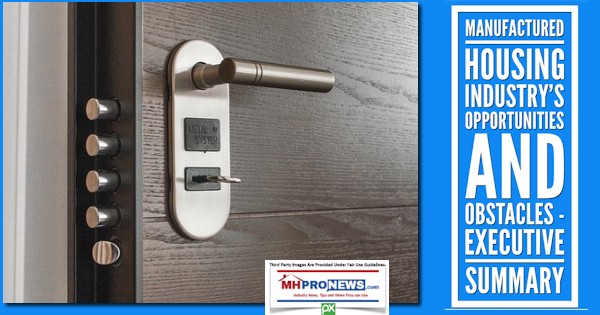
Barriers to Entry, Persistence, and Exiting in Business, Affordable Housing, and Manufactured Homes
National Association of Realtors Research Exposes Manufactured Housing Institute Errors
